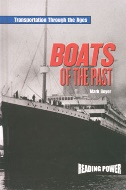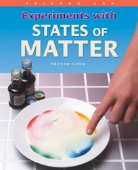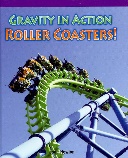-
 Aircraft carriers are truly the fortresses of the sea! Students will get an inside-out view of these incredible floating cities, from how they are constructed to how they function as important parts of a country's defense. Students also will learn about the various aircraft that are on board and the crew that keeps aircraft carriers in ship shape!
Aircraft carriers are truly the fortresses of the sea! Students will get an inside-out view of these incredible floating cities, from how they are constructed to how they function as important parts of a country's defense. Students also will learn about the various aircraft that are on board and the crew that keeps aircraft carriers in ship shape! -
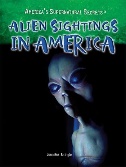 In 1878 in Denison, Texas, a man named John Martin looked up into the sky and saw something he could not explain. Americans have been hooked on the possibility of beings from space visiting Earth ever since. A sense of wonder, and reality, are brought to some popular legends of alien encounters and sightings in this volume. The final chapter explores how these legends have become even more popular thanks to movies, television, and literature.
In 1878 in Denison, Texas, a man named John Martin looked up into the sky and saw something he could not explain. Americans have been hooked on the possibility of beings from space visiting Earth ever since. A sense of wonder, and reality, are brought to some popular legends of alien encounters and sightings in this volume. The final chapter explores how these legends have become even more popular thanks to movies, television, and literature. -
 Because of the biological similarities between many animals and humans, scientists can learn about diseases, and find out how humans might react to medicines, cosmetics, chemicals, and other products by testing them on animals first. According to the Humane Society of the United States, more than twenty-five million animals are used in research, testing, and education each year. Readers learn about the various philosophies on animal testing, what tests are used, and how they are performed. The book presents the pros and cons of animal testing and some of the alternative methods to animal testing that scientists are developing today.
Because of the biological similarities between many animals and humans, scientists can learn about diseases, and find out how humans might react to medicines, cosmetics, chemicals, and other products by testing them on animals first. According to the Humane Society of the United States, more than twenty-five million animals are used in research, testing, and education each year. Readers learn about the various philosophies on animal testing, what tests are used, and how they are performed. The book presents the pros and cons of animal testing and some of the alternative methods to animal testing that scientists are developing today. -
 Artificial Intelligence is one of the most intriguing and difficult technological advances ever explored by man. It is the study of intelligent behavior and the attempt to recreate it through technology. This beginner's guide explores, not only the technology behind AI, but the current and future benefits of further exploration.
Artificial Intelligence is one of the most intriguing and difficult technological advances ever explored by man. It is the study of intelligent behavior and the attempt to recreate it through technology. This beginner's guide explores, not only the technology behind AI, but the current and future benefits of further exploration. -
 As the world's population expands, so too does the risk of communicable disease and global pandemics. Consequently, healthcare has assumed a greater centrality in the public consciousness both in the United States and around the world. With various national and international organizations dedicated to epidemiological research and disease control, societal welfare has become an increasingly significant aspect of public policy. The historical, legal, and scientific factors that form the basis of public health locally and globally are the subjects of this relevant and revealing volume.
As the world's population expands, so too does the risk of communicable disease and global pandemics. Consequently, healthcare has assumed a greater centrality in the public consciousness both in the United States and around the world. With various national and international organizations dedicated to epidemiological research and disease control, societal welfare has become an increasingly significant aspect of public policy. The historical, legal, and scientific factors that form the basis of public health locally and globally are the subjects of this relevant and revealing volume. -
 The detailed illustrations and photographs in this fascinating book take us into the complicated, hectic world of the beehive, where we observe the rigidly structured "class system" of the honeybee, with its worker bees, drones, and queen. The complex body and internal systems of the bee are examined, as the history, honey production, construction of the honeycomb, reproduction, and colony building are discussed.
The detailed illustrations and photographs in this fascinating book take us into the complicated, hectic world of the beehive, where we observe the rigidly structured "class system" of the honeybee, with its worker bees, drones, and queen. The complex body and internal systems of the bee are examined, as the history, honey production, construction of the honeycomb, reproduction, and colony building are discussed. -
Sin stock
 Luis loves to read, but soon his house in Colombia is so full of books there's barely room for the family. What to do? Then he comes up with the perfect solution: a traveling library! He buys two donkeys, Alfa and Beto, and travels with them throughout the land, bringing books and reading to the children in faraway villages. Beautiful!
Luis loves to read, but soon his house in Colombia is so full of books there's barely room for the family. What to do? Then he comes up with the perfect solution: a traveling library! He buys two donkeys, Alfa and Beto, and travels with them throughout the land, bringing books and reading to the children in faraway villages. Beautiful! -
 Imagine traveling at half the speed of a jet plane without ever leaving the ground! Students will discover the technology that makes such speeds possible, from special tracks and safety precautions to aerodynamically designed trains. What are the limits to the speed of trains? What imposes those limits? Students also will read about the future of passenger train travel, from flying trains to trains that use huge magnets to levitate inches or centimeters off the track. Some trains safely reach speeds of more than 200 mph!
Imagine traveling at half the speed of a jet plane without ever leaving the ground! Students will discover the technology that makes such speeds possible, from special tracks and safety precautions to aerodynamically designed trains. What are the limits to the speed of trains? What imposes those limits? Students also will read about the future of passenger train travel, from flying trains to trains that use huge magnets to levitate inches or centimeters off the track. Some trains safely reach speeds of more than 200 mph! -
 The spread of harmful chemicals and biological organisms can injure and kill thousands of people and make an infected area unlivable for some time to come. In the age of modern terrorism, many people fear militant organizations will unleash chemical and biological weapons in public places. This book provides readers with an overview of what these weapons are, who uses them and why, and explains how much of a threat they are to our way of life. Over time, countries have pledged to ban the use of CBWs in various agreements, with limited success.
The spread of harmful chemicals and biological organisms can injure and kill thousands of people and make an infected area unlivable for some time to come. In the age of modern terrorism, many people fear militant organizations will unleash chemical and biological weapons in public places. This book provides readers with an overview of what these weapons are, who uses them and why, and explains how much of a threat they are to our way of life. Over time, countries have pledged to ban the use of CBWs in various agreements, with limited success. -
 Chemistry is often a daunting subject for students, fostering a bewilderment that sets in upon their first encounter with the Periodic Table. This book demystifies an important aspect of the subject--chemical reactions--and demonstrates exactly how fascinating and fun chemistry can be. Starting out by explaining just what a chemical reaction is--and what it isn't--the book details in accessible language the various kinds of chemical reactions that are possible. It draws upon readily comprehensible everyday examples, like rusting metal, baking bread, battery power, digestion, rotting eggs, and burning candles. The book then turns to a survey of the history of chemical research, beginning in the Ancient and Classical Worlds, progressing to the Medieval alchemists and Renaissance innovators, and ending with the leading lights of modern chemistry. Readers will be introduced to luminaries such as Antoine Lavoisier, John Dalton, Louis Pasteur, Dmitri Mendeleyev, the Curies, and Ernest Rutherford. It concludes with an inspiring examination of how current research and cutting edge developments are using chemistry and chemical reactions to save lives and insure continued life on Earth. This book amply illustrates the accessibility, relevance, and gee-whiz fun of chemical reactions.
Chemistry is often a daunting subject for students, fostering a bewilderment that sets in upon their first encounter with the Periodic Table. This book demystifies an important aspect of the subject--chemical reactions--and demonstrates exactly how fascinating and fun chemistry can be. Starting out by explaining just what a chemical reaction is--and what it isn't--the book details in accessible language the various kinds of chemical reactions that are possible. It draws upon readily comprehensible everyday examples, like rusting metal, baking bread, battery power, digestion, rotting eggs, and burning candles. The book then turns to a survey of the history of chemical research, beginning in the Ancient and Classical Worlds, progressing to the Medieval alchemists and Renaissance innovators, and ending with the leading lights of modern chemistry. Readers will be introduced to luminaries such as Antoine Lavoisier, John Dalton, Louis Pasteur, Dmitri Mendeleyev, the Curies, and Ernest Rutherford. It concludes with an inspiring examination of how current research and cutting edge developments are using chemistry and chemical reactions to save lives and insure continued life on Earth. This book amply illustrates the accessibility, relevance, and gee-whiz fun of chemical reactions. -
 This is a well-organized look as coastal regions: what shapes them, some environmental threats, and their usefulness in industry and tourism. Several beautiful and interesting coastlines are highlighted, including Cancun and the Great Barrier Reef. Readers will learn about each coastline's location, population, local industries, and environmental threats.
This is a well-organized look as coastal regions: what shapes them, some environmental threats, and their usefulness in industry and tourism. Several beautiful and interesting coastlines are highlighted, including Cancun and the Great Barrier Reef. Readers will learn about each coastline's location, population, local industries, and environmental threats. -
 The Internet brought about a total revolution in the world of information. Today, anyone with an Internet connection can access a wealth of information online. As our access to data increases, copyright laws struggle to keep up. This book examines how copyright law has been applied to online content, the emerging open source movement, fair use, proper citation practice, and the ethics of using and citing online information. It is an invaluable resource for today's students.
The Internet brought about a total revolution in the world of information. Today, anyone with an Internet connection can access a wealth of information online. As our access to data increases, copyright laws struggle to keep up. This book examines how copyright law has been applied to online content, the emerging open source movement, fair use, proper citation practice, and the ethics of using and citing online information. It is an invaluable resource for today's students. -
 Amazing mountain animals fill the pages of this exciting series. Redesigned with new features, each book invites readers to discover the world of creatures that make their home in high places. Young learners will read about each animals unique physical characteristics, behavior, and adaptations to their environment. Through fascinating facts and brilliant photographs, these books paint a vibrant picture of the incredible array of animal life in the mountains.
Amazing mountain animals fill the pages of this exciting series. Redesigned with new features, each book invites readers to discover the world of creatures that make their home in high places. Young learners will read about each animals unique physical characteristics, behavior, and adaptations to their environment. Through fascinating facts and brilliant photographs, these books paint a vibrant picture of the incredible array of animal life in the mountains. -
 Some of the most important contributors to the food chain are those creatures that help break things down: decomposers. If not for these birds, bugs, and worms organic matter couldn't be recycled back into nature. Readers will discover the different kinds of decomposers, how they do their job, and why it is so important. This fascinating book includes graphic organizers and annotated illustrations to better explain the food chain.
Some of the most important contributors to the food chain are those creatures that help break things down: decomposers. If not for these birds, bugs, and worms organic matter couldn't be recycled back into nature. Readers will discover the different kinds of decomposers, how they do their job, and why it is so important. This fascinating book includes graphic organizers and annotated illustrations to better explain the food chain. -
 There are many different types of diamonds in the world. They come in a range of colors and can be cut into all kinds of shapes. This book shows readers that the way these different kinds of diamonds are created really isn't that different at all. Interesting facts and detailed photographs explain where these gems come from, how they're made into jewelry, and what makes them so valuable.
There are many different types of diamonds in the world. They come in a range of colors and can be cut into all kinds of shapes. This book shows readers that the way these different kinds of diamonds are created really isn't that different at all. Interesting facts and detailed photographs explain where these gems come from, how they're made into jewelry, and what makes them so valuable. -
 Emeralds are the most expensive gems in the world, but it takes a lot of time and effort for them to get that way. Readers will discover many interesting facts about this beautiful May birthstone that takes millions of years to form. Vibrant photographs capture emeralds at all stages, from the mines to beautiful pieces of jewelry.
Emeralds are the most expensive gems in the world, but it takes a lot of time and effort for them to get that way. Readers will discover many interesting facts about this beautiful May birthstone that takes millions of years to form. Vibrant photographs capture emeralds at all stages, from the mines to beautiful pieces of jewelry. -
 The world's wildlife is vanishing at an alarming rate. Scientists at the Nature Conservancy and the World Wildlife Federation estimate that one in four mammals, and a full third of Earth's amphibians are in danger of becoming extinct. Today species are becoming extinct at a rate that is anywhere from 100 to 1,000 times faster than normal. People have been in fierce competition with wild animals for land, food, and natural resources for years. When over-hunting and -fishing of species and a rise in the level of pollution is added to this mix, humans come to represent the single gravest threat to wildlife survival. Any species that disappears leaves a hole in the web of life. Mass extinction would leave so many holes that the web might totally fall apart. Humans must realize the important role wildlife plays in the survival of the planet and reverse the damage--before it's too late.
The world's wildlife is vanishing at an alarming rate. Scientists at the Nature Conservancy and the World Wildlife Federation estimate that one in four mammals, and a full third of Earth's amphibians are in danger of becoming extinct. Today species are becoming extinct at a rate that is anywhere from 100 to 1,000 times faster than normal. People have been in fierce competition with wild animals for land, food, and natural resources for years. When over-hunting and -fishing of species and a rise in the level of pollution is added to this mix, humans come to represent the single gravest threat to wildlife survival. Any species that disappears leaves a hole in the web of life. Mass extinction would leave so many holes that the web might totally fall apart. Humans must realize the important role wildlife plays in the survival of the planet and reverse the damage--before it's too late. -

Family Law is an accessible, student-friendly textbook which provides a comprehensive foundation in the key topics covered by undergraduate and CPE/GDL courses. Written with clarity, Family Law offers an introduction not just to the black-letter law but also to the social, economic and historical developments that have helped to shape it, considering key academic debates and areas of controversy at the end of each chapter.
-
 Some of the most famous animals in history have been horses. From George Washingtons trusty Arabian, Magnolia, to the fictional stallion Black Beauty, horses have played an important part in historical events, books, television shows, and movies for many years. Readers will discover important facts about some of the worlds most important and beloved horses. Photographs of the horses and their owners help illustrate these amazing and beautiful animals.
Some of the most famous animals in history have been horses. From George Washingtons trusty Arabian, Magnolia, to the fictional stallion Black Beauty, horses have played an important part in historical events, books, television shows, and movies for many years. Readers will discover important facts about some of the worlds most important and beloved horses. Photographs of the horses and their owners help illustrate these amazing and beautiful animals. -
Sale!
 PROMOThis revised and expanded second edition of Ittelson's master work will give you that firm grasp of "the numbers" necessary for business success. With more than 100,000 copies in print, Financial Statements is a perfect introduction to financial accounting for non-financial managers, stock-market investors, undergraduate business and MBA students, lawyers, lenders, entrepreneurs, and more. Most introductory finance and accounting books fail either because they are written "by accountants for accountants" or the authors "dumb down" the concepts until they are virtually useless. Financial Statements deftly shows that all this accounting and financial-reporting stuff is not rocket science and that you can understand it! Ittelson empowers non-financial managers by clearly and simply demonstrating how the balance sheet, income statement and cash flow statement work together to offer a "snapshot" of any company's financial health. Every term is defined in simple, understandable language. Every concept is explained with a basic, straightforward transaction example. And with the book's uniquely visual approach, you'll be able to see exactly how each transaction affects the three key financial statement of the enterprise.
PROMOThis revised and expanded second edition of Ittelson's master work will give you that firm grasp of "the numbers" necessary for business success. With more than 100,000 copies in print, Financial Statements is a perfect introduction to financial accounting for non-financial managers, stock-market investors, undergraduate business and MBA students, lawyers, lenders, entrepreneurs, and more. Most introductory finance and accounting books fail either because they are written "by accountants for accountants" or the authors "dumb down" the concepts until they are virtually useless. Financial Statements deftly shows that all this accounting and financial-reporting stuff is not rocket science and that you can understand it! Ittelson empowers non-financial managers by clearly and simply demonstrating how the balance sheet, income statement and cash flow statement work together to offer a "snapshot" of any company's financial health. Every term is defined in simple, understandable language. Every concept is explained with a basic, straightforward transaction example. And with the book's uniquely visual approach, you'll be able to see exactly how each transaction affects the three key financial statement of the enterprise. -
 Now the best-selling book of its kind has gotten even better. This revised and expanded second edition of Ittelson’s master work will give you that firm grasp of “the numbers” necessary for business success. With more than 100,000 copies in print, Financial Statements is a perfect introduction to financial accounting for non-financial managers, stock-market investors, undergraduate business and MBA students, lawyers, lenders, entrepreneurs, and more.
Now the best-selling book of its kind has gotten even better. This revised and expanded second edition of Ittelson’s master work will give you that firm grasp of “the numbers” necessary for business success. With more than 100,000 copies in print, Financial Statements is a perfect introduction to financial accounting for non-financial managers, stock-market investors, undergraduate business and MBA students, lawyers, lenders, entrepreneurs, and more. -
 Tacos, enchiladas, tortillas, and even huevos rancheros are not unusual items in many American restaurants. Mexican food is loved all over the world, but Mexicos kitchens hold much more than these dishes. Some surprising ingredients and fascinating cultural facts are in store for readers and fledgling chefs. Mexicans use prickly pear cactus, plantains, and even chocolate in their meals. A salsa recipe at the end of the book gives young cooks a chance to create their own fiesta!
Tacos, enchiladas, tortillas, and even huevos rancheros are not unusual items in many American restaurants. Mexican food is loved all over the world, but Mexicos kitchens hold much more than these dishes. Some surprising ingredients and fascinating cultural facts are in store for readers and fledgling chefs. Mexicans use prickly pear cactus, plantains, and even chocolate in their meals. A salsa recipe at the end of the book gives young cooks a chance to create their own fiesta! -
 Since the terrible events of 9/11, more attention than ever has been paid to the threats and challenges posed by terrorists. Weinberg explains who the terrorists are, where they came from, what motivates them, and what, if anything, can be done to stop them. It provides a fascinating insight into how terrorist 'cells' operate and what they might do in the future. Leonard Weinberg is Foundation Professor of Political Science at the University of Nevada. He has also served as a consultant to the United Nations Office for the Prevention of Terrorism and was a recipient of the 1999 Thornton Peace Prize.
Since the terrible events of 9/11, more attention than ever has been paid to the threats and challenges posed by terrorists. Weinberg explains who the terrorists are, where they came from, what motivates them, and what, if anything, can be done to stop them. It provides a fascinating insight into how terrorist 'cells' operate and what they might do in the future. Leonard Weinberg is Foundation Professor of Political Science at the University of Nevada. He has also served as a consultant to the United Nations Office for the Prevention of Terrorism and was a recipient of the 1999 Thornton Peace Prize. -
 Great Expectations is Charles Dickens's thirteenth novel. It is his second novel, after David Copperfield, to be fully narrated in the first person. Great Expectations is a bildungsroman, or a coming-of-age novel, and it is a classic work of Victorian literature. It depicts the growth and personal development of an orphan named Pip. The novel was first published in serial form in Dickens's weekly periodical All the Year Round, from 1 December 1860 to August 1861. In October 1861, Chapman and Hall published the novel in three volumes.Dickens originally intended Great Expectations to be twice as long, but constraints imposed by the management of All the Year Round limited the novel's length. The novel is collected and dense, with a conciseness unusual for Dickens. According to G. K. Chesterton, Dickens penned Great Expectations in "the afternoon of [his] life and fame." It was the penultimate novel Dickens completed, preceding Our Mutual Friend.It is set among the marshes of Kent and in London in the early to mid-1800s. The novel contains some of Dickens most memorable scenes, including its opening, in a graveyard, when the young orphan Pip is accosted by the escaped convict, Abel Magwitch. Great Expectations is a graphic book, full of extreme imagery, poverty, prison ships ("the hulks"), barriers and chains, and fights to the death.Upon its release, Thomas Carlyle spoke of "All that Pip's nonsense." Later, George Bernard Shaw praised the novel as "All of one piece and consistently truthfull." Dickens felt Great Expectations was his best work, calling it "a very fine idea," and was very sensitive to compliments from his friends: "Bulwer, who has been, as I think you know, extraordinarily taken by the book."Great Expectations has a colourful cast that has entered popular culture: the capricious Miss Havisham, the cold and beautiful Estella, Joe the kind and generous blacksmith, the dry and sycophantic Uncle Pumblechook, Mr. Jaggers, Wemmick with his dual personality, and the eloquent and wise friend, Herbert Pocket. Throughout the narrative, typical Dickensian themes emerge: wealth and poverty, love and rejection, and the eventual triumph of good over evil. Great Expectations has become very popular and is now taught as a classic in many English classes. It has been translated into many languages and adapted many times in film and other media.
Great Expectations is Charles Dickens's thirteenth novel. It is his second novel, after David Copperfield, to be fully narrated in the first person. Great Expectations is a bildungsroman, or a coming-of-age novel, and it is a classic work of Victorian literature. It depicts the growth and personal development of an orphan named Pip. The novel was first published in serial form in Dickens's weekly periodical All the Year Round, from 1 December 1860 to August 1861. In October 1861, Chapman and Hall published the novel in three volumes.Dickens originally intended Great Expectations to be twice as long, but constraints imposed by the management of All the Year Round limited the novel's length. The novel is collected and dense, with a conciseness unusual for Dickens. According to G. K. Chesterton, Dickens penned Great Expectations in "the afternoon of [his] life and fame." It was the penultimate novel Dickens completed, preceding Our Mutual Friend.It is set among the marshes of Kent and in London in the early to mid-1800s. The novel contains some of Dickens most memorable scenes, including its opening, in a graveyard, when the young orphan Pip is accosted by the escaped convict, Abel Magwitch. Great Expectations is a graphic book, full of extreme imagery, poverty, prison ships ("the hulks"), barriers and chains, and fights to the death.Upon its release, Thomas Carlyle spoke of "All that Pip's nonsense." Later, George Bernard Shaw praised the novel as "All of one piece and consistently truthfull." Dickens felt Great Expectations was his best work, calling it "a very fine idea," and was very sensitive to compliments from his friends: "Bulwer, who has been, as I think you know, extraordinarily taken by the book."Great Expectations has a colourful cast that has entered popular culture: the capricious Miss Havisham, the cold and beautiful Estella, Joe the kind and generous blacksmith, the dry and sycophantic Uncle Pumblechook, Mr. Jaggers, Wemmick with his dual personality, and the eloquent and wise friend, Herbert Pocket. Throughout the narrative, typical Dickensian themes emerge: wealth and poverty, love and rejection, and the eventual triumph of good over evil. Great Expectations has become very popular and is now taught as a classic in many English classes. It has been translated into many languages and adapted many times in film and other media. -
Sale!
 PROMOGreat Expectations is Charles Dickens's thirteenth novel. It is his second novel, after David Copperfield, to be fully narrated in the first person. Great Expectations is a bildungsroman, or a coming-of-age novel, and it is a classic work of Victorian literature. It depicts the growth and personal development of an orphan named Pip. The novel was first published in serial form in Dickens's weekly periodical All the Year Round, from 1 December 1860 to August 1861. In October 1861, Chapman and Hall published the novel in three volumes.Dickens originally intended Great Expectations to be twice as long, but constraints imposed by the management of All the Year Round limited the novel's length. The novel is collected and dense, with a conciseness unusual for Dickens. According to G. K. Chesterton, Dickens penned Great Expectations in "the afternoon of [his] life and fame." It was the penultimate novel Dickens completed, preceding Our Mutual Friend.It is set among the marshes of Kent and in London in the early to mid-1800s. The novel contains some of Dickens most memorable scenes, including its opening, in a graveyard, when the young orphan Pip is accosted by the escaped convict, Abel Magwitch.
PROMOGreat Expectations is Charles Dickens's thirteenth novel. It is his second novel, after David Copperfield, to be fully narrated in the first person. Great Expectations is a bildungsroman, or a coming-of-age novel, and it is a classic work of Victorian literature. It depicts the growth and personal development of an orphan named Pip. The novel was first published in serial form in Dickens's weekly periodical All the Year Round, from 1 December 1860 to August 1861. In October 1861, Chapman and Hall published the novel in three volumes.Dickens originally intended Great Expectations to be twice as long, but constraints imposed by the management of All the Year Round limited the novel's length. The novel is collected and dense, with a conciseness unusual for Dickens. According to G. K. Chesterton, Dickens penned Great Expectations in "the afternoon of [his] life and fame." It was the penultimate novel Dickens completed, preceding Our Mutual Friend.It is set among the marshes of Kent and in London in the early to mid-1800s. The novel contains some of Dickens most memorable scenes, including its opening, in a graveyard, when the young orphan Pip is accosted by the escaped convict, Abel Magwitch. -
 Gymnasts are among the strongest athletes in the world. They leap, tumble, flip, and fly through the air with finesse. Readers interested in gymnastics will discover what it takes to become a gymnast, as well as the different gymnastic events they can participate in. Photographs of gymnasts and gymnastic apparatuses show readers what its like to join the team.
Gymnasts are among the strongest athletes in the world. They leap, tumble, flip, and fly through the air with finesse. Readers interested in gymnastics will discover what it takes to become a gymnast, as well as the different gymnastic events they can participate in. Photographs of gymnasts and gymnastic apparatuses show readers what its like to join the team. -
 What does it mean to be a good citizen? It means being helpful and following the rules. Readers discover that they can do their part to make their communities better one small action at a time. Colorful photographs show kids being the best citizens they can be at school, at home, and with their friends.
What does it mean to be a good citizen? It means being helpful and following the rules. Readers discover that they can do their part to make their communities better one small action at a time. Colorful photographs show kids being the best citizens they can be at school, at home, and with their friends. -
Sale!
 PROMOThis official pronouncement incorporates 2015 Amendments to the IFRS for SMEs (effective 1 January 2017 with early application permitted)
PROMOThis official pronouncement incorporates 2015 Amendments to the IFRS for SMEs (effective 1 January 2017 with early application permitted) -
Today there are more than 1.1 billion Muslims in the world. Even in the wake of this enormous growth, many of the practices established by Muhammad remain intact today. By adhering to the Qur’an, Muslims observe a rich cultural tradition that bridges the past, present, and future worlds in a community of the faithful.
-
 This book gives students an in-depth look at how large telescopes work. The wonder and awe of space and the scientific instruments we use to study it both come shining through in this fascinating book. Full-color diagrams and illustrations will help students visualize how the technology of telescopes works. Students will learn about the creation of mirrors 26.2 feet wide and telescope teams that work together to create a telescope as powerful as if it had a mirror the size of Earth!
This book gives students an in-depth look at how large telescopes work. The wonder and awe of space and the scientific instruments we use to study it both come shining through in this fascinating book. Full-color diagrams and illustrations will help students visualize how the technology of telescopes works. Students will learn about the creation of mirrors 26.2 feet wide and telescope teams that work together to create a telescope as powerful as if it had a mirror the size of Earth! -
Sale!Sin stock
 PROMOThe Oxford Learner's Pocket Dictionary has over 38,000 words, phrases, and meanings giving students a handy quick-reference guide to basic English vocabulary. It includes essential information on meanings, grammar patterns, spelling, idioms, and phrasal verbs.
PROMOThe Oxford Learner's Pocket Dictionary has over 38,000 words, phrases, and meanings giving students a handy quick-reference guide to basic English vocabulary. It includes essential information on meanings, grammar patterns, spelling, idioms, and phrasal verbs. -
Sale!
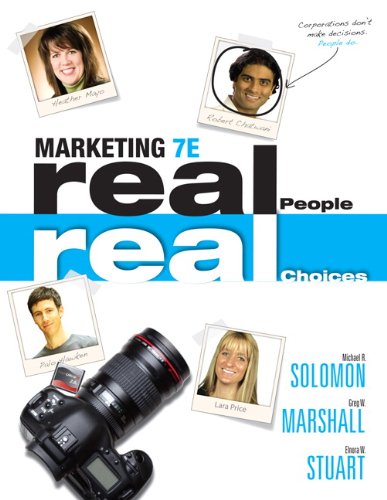 PROMOReal people, real choices–give students a real feel for marketing. Marketing: Real People, Real Choicesis the only text to introduce marketing from the perspective of real people who make real marketing decisions at leading companies everyday. This reader-friendly text conveys timely and relevant material in a dynamic presentation, highlighting how marketing concepts are implemented, and what they mean in the marketplace. The seventh edition includes more information on marketing metrics, today’s new approach to advertising and promotions, and an increased emphasis on the links between marketing principles and the real world. "synopsis" may belong to another edition of this title.
PROMOReal people, real choices–give students a real feel for marketing. Marketing: Real People, Real Choicesis the only text to introduce marketing from the perspective of real people who make real marketing decisions at leading companies everyday. This reader-friendly text conveys timely and relevant material in a dynamic presentation, highlighting how marketing concepts are implemented, and what they mean in the marketplace. The seventh edition includes more information on marketing metrics, today’s new approach to advertising and promotions, and an increased emphasis on the links between marketing principles and the real world. "synopsis" may belong to another edition of this title.












